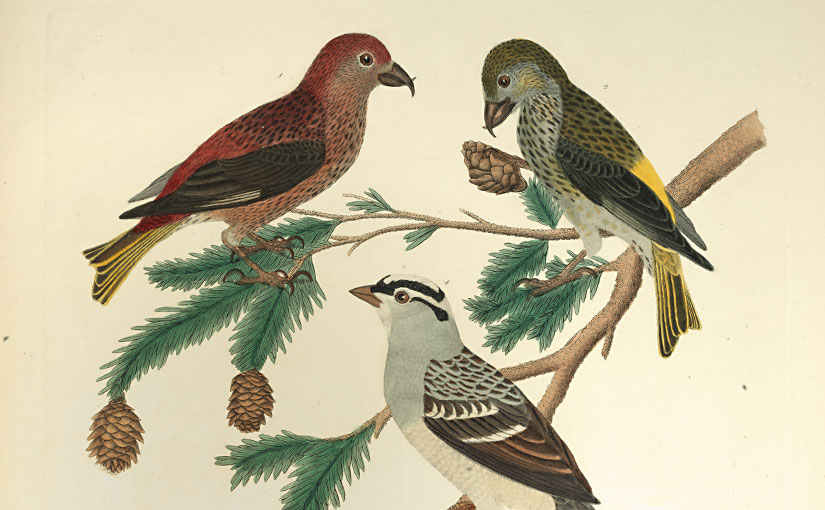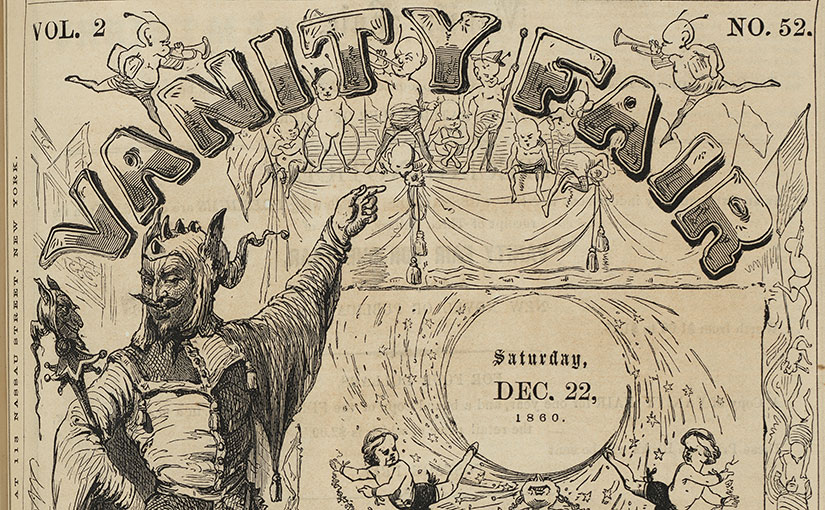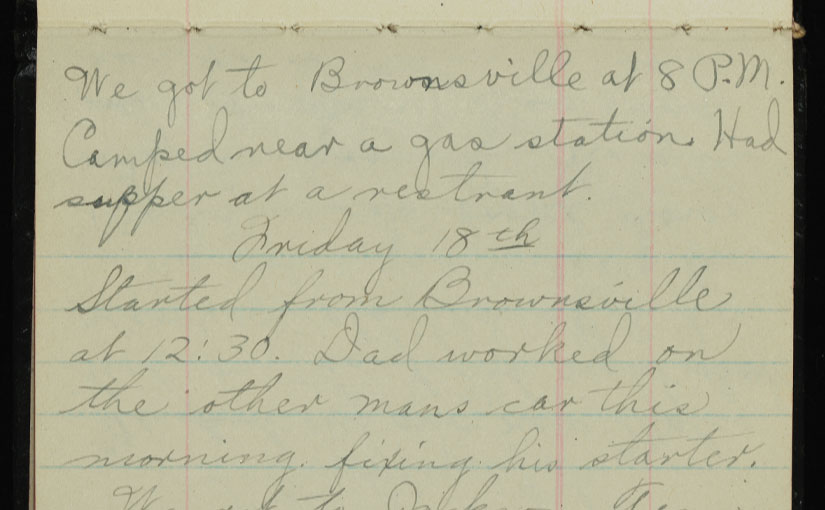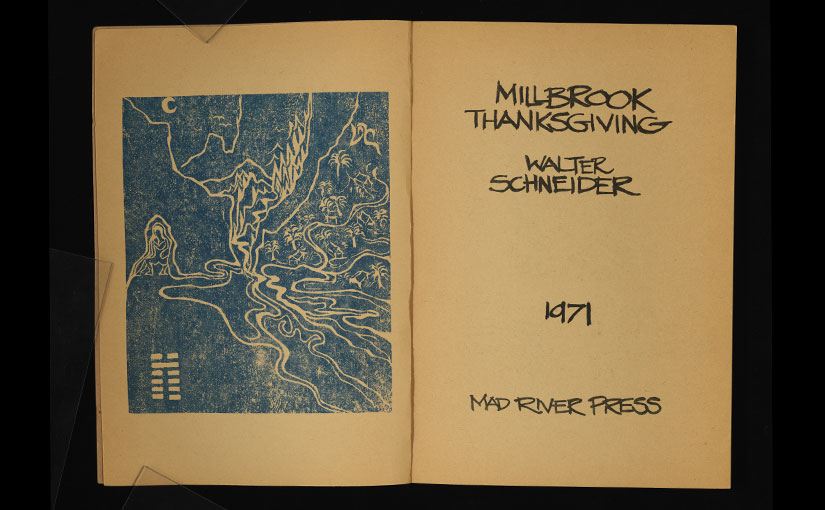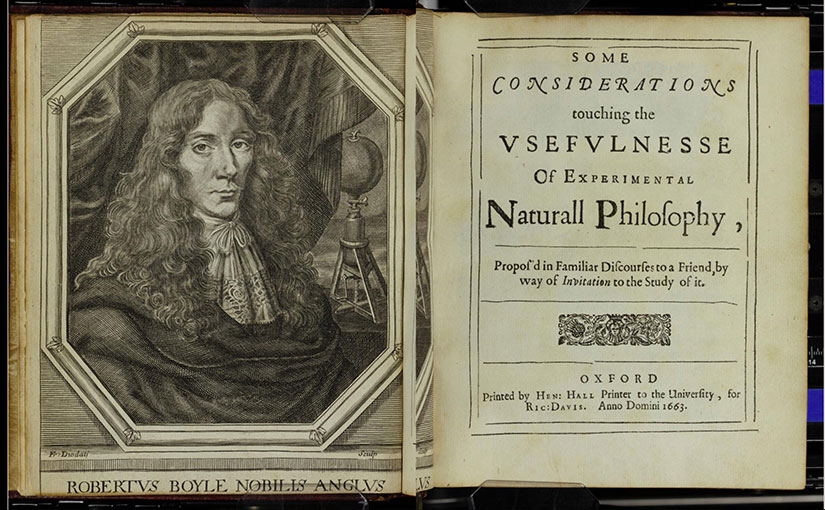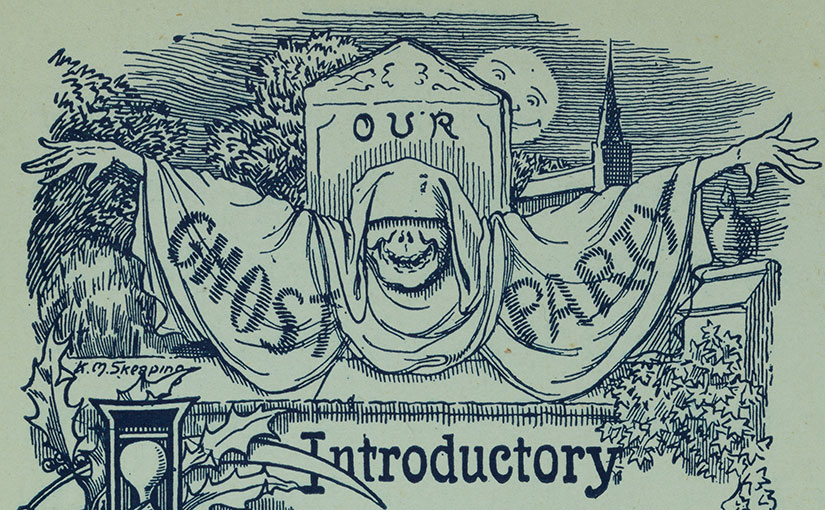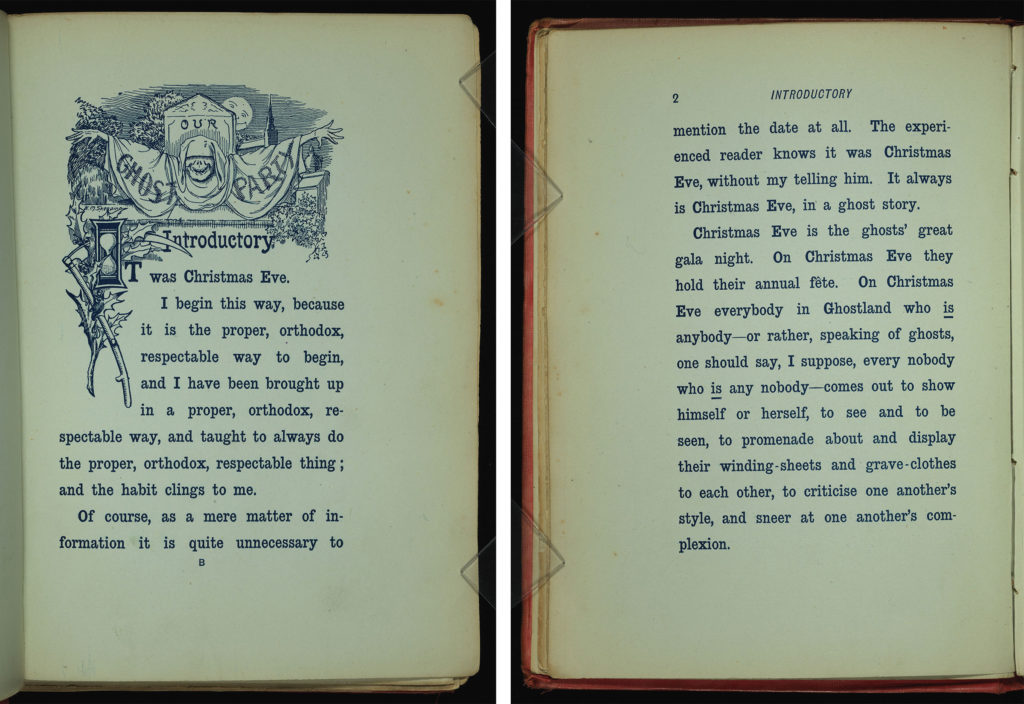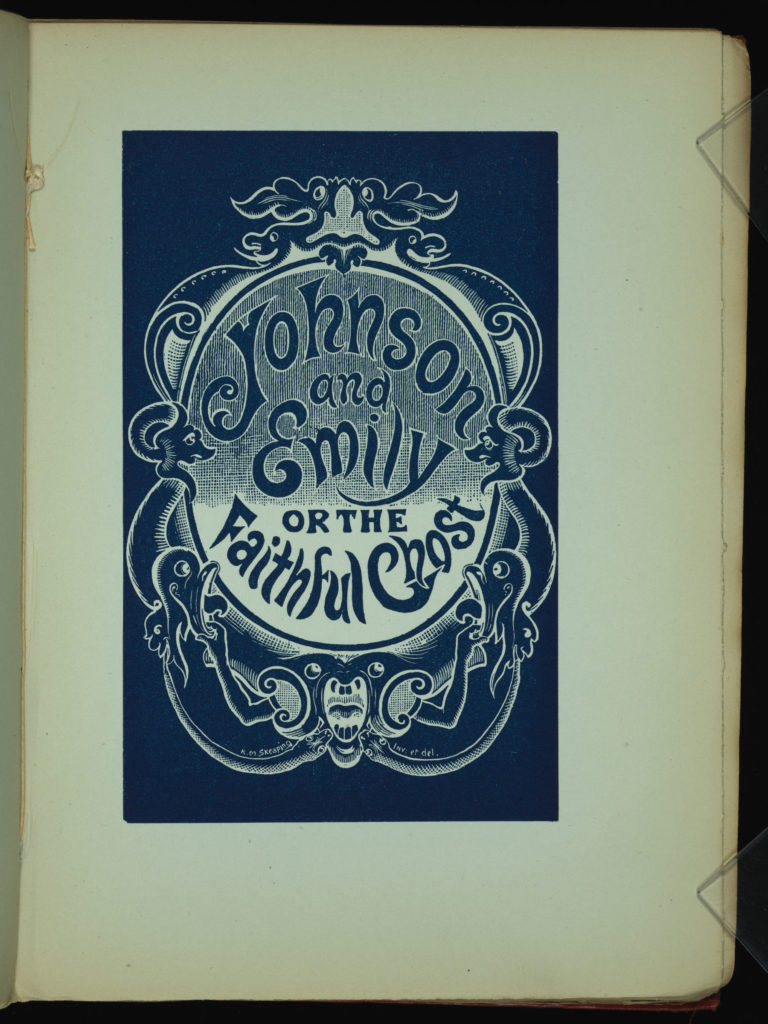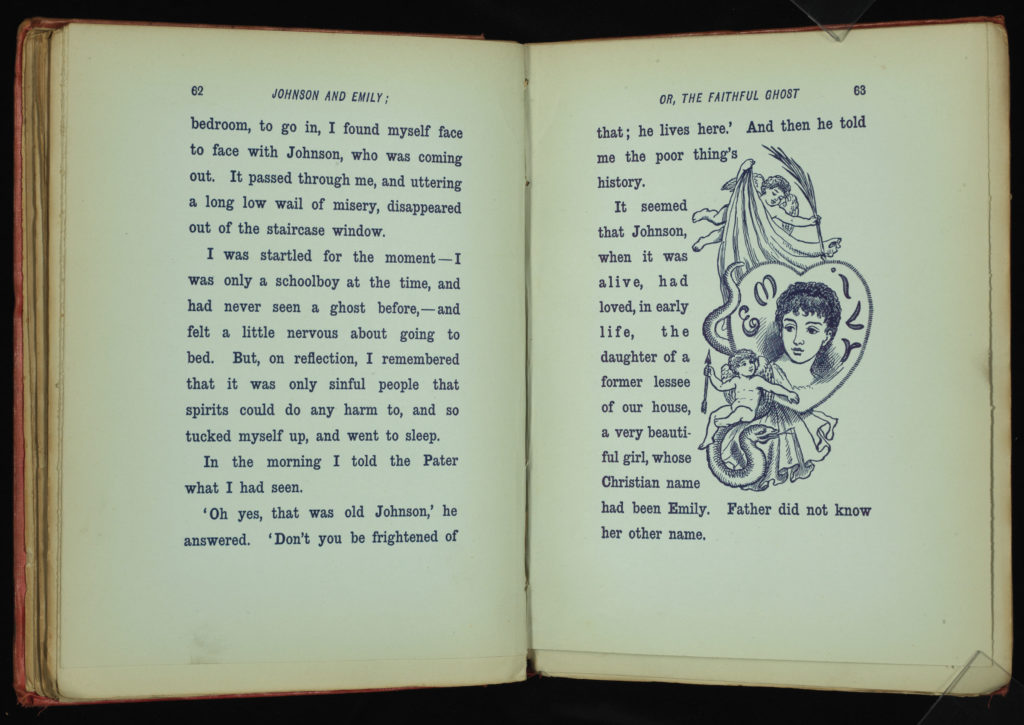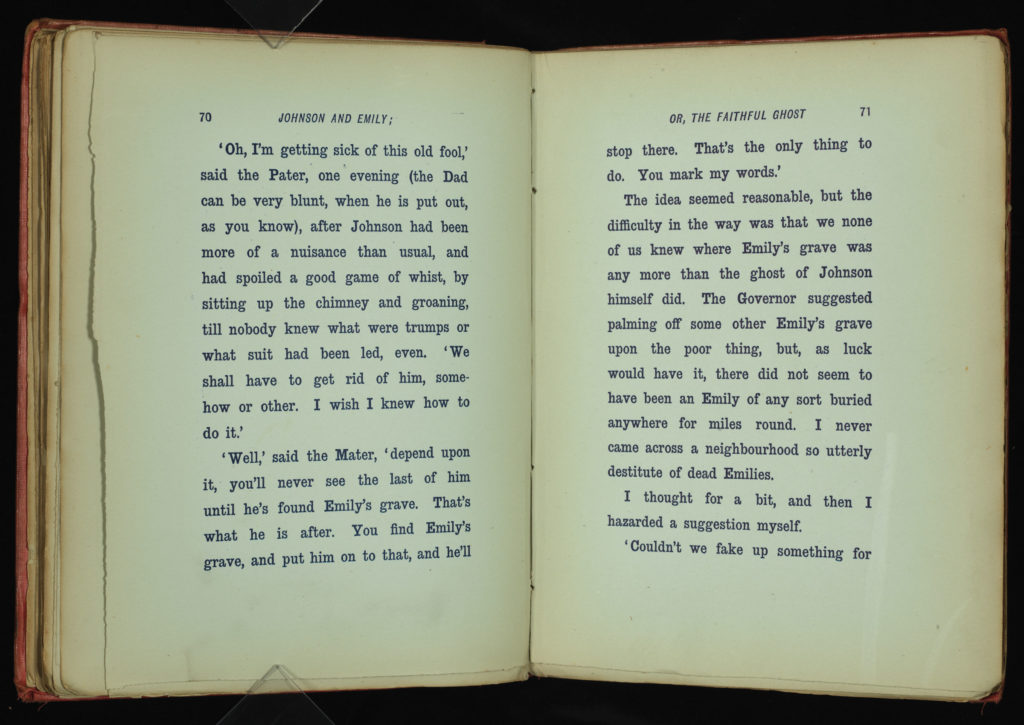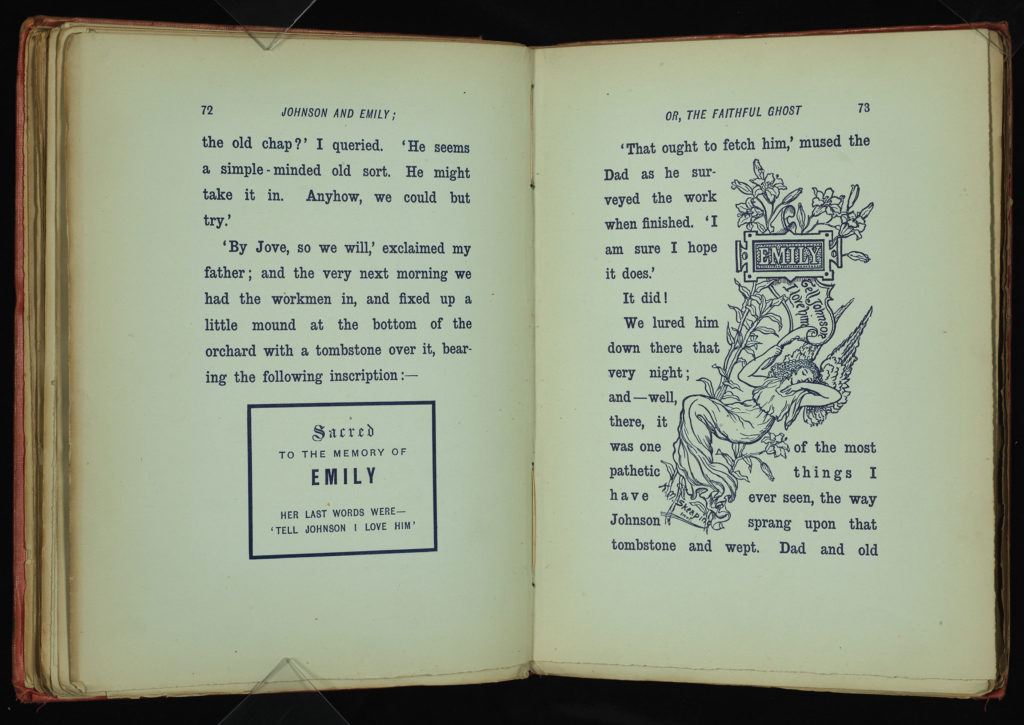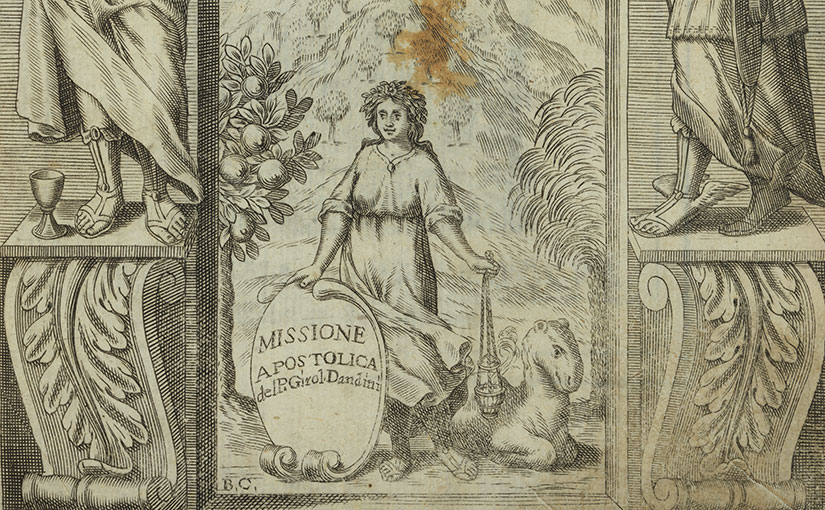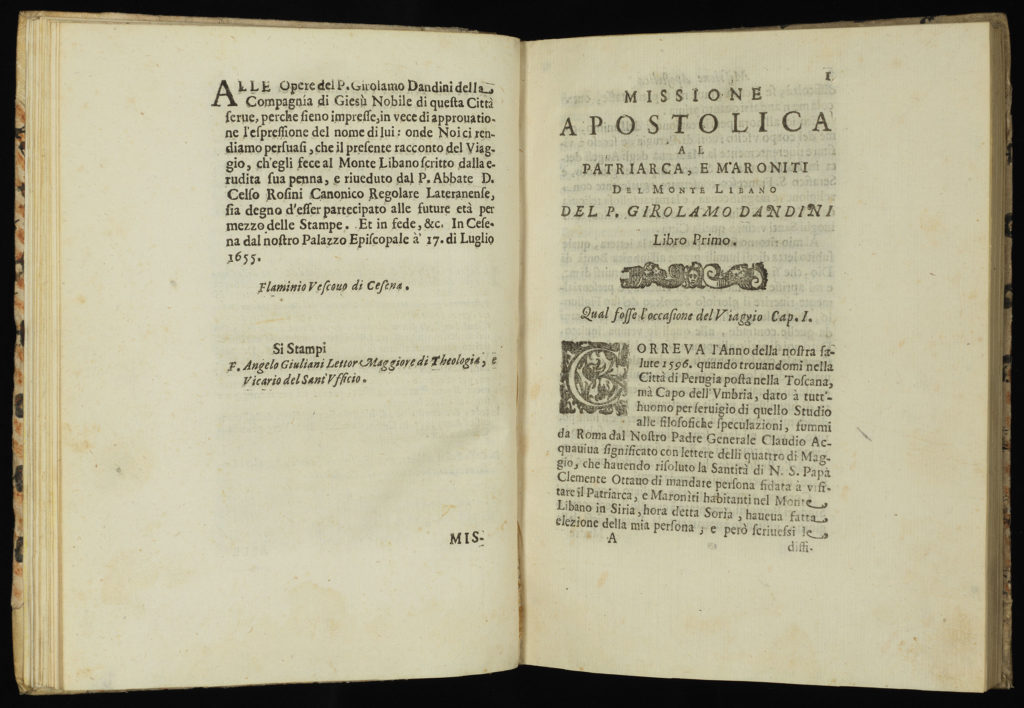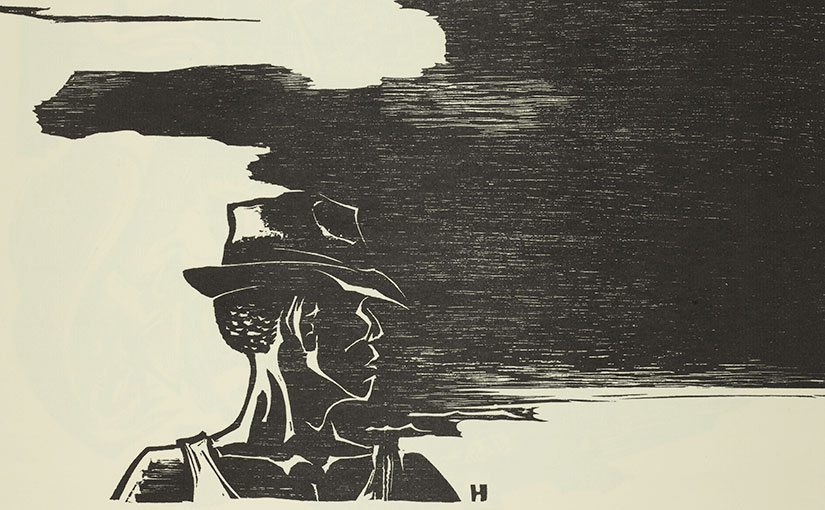Rare Books and Special Collections is open through Friday, December 21, 2018. We will be closed for the Christmas and New Year’s Break December 24, 2018, through January 1, 2019. We will reopen on Wednesday, January 2, 2019.
Author: rbsc
Some Satirical Musings for Christmas
by Julie Tanaka, Curator, Special Collections
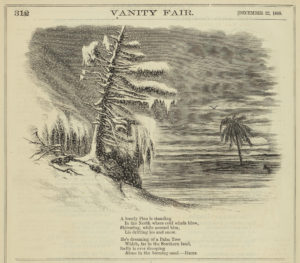 Vanity Fair, Saturday, Dec. 22, 1860—this was the first Christmas issue featuring a series of satirical columns and illustrations beginning with Richard Henry Stoddard’s account of poor, unemployed John Hardy thinking about “money, money, money” on Christmas Eve. Following this was some “Christmas Cheer” in England and a “Christmas Jingle.” Then Heine Heine’s lonely, shivering pine tree covered in snow dreaming about the palm tree in the warm southern lands. At center, a two-page spread of Virginia cavaliers celebrating the holiday.
Vanity Fair, Saturday, Dec. 22, 1860—this was the first Christmas issue featuring a series of satirical columns and illustrations beginning with Richard Henry Stoddard’s account of poor, unemployed John Hardy thinking about “money, money, money” on Christmas Eve. Following this was some “Christmas Cheer” in England and a “Christmas Jingle.” Then Heine Heine’s lonely, shivering pine tree covered in snow dreaming about the palm tree in the warm southern lands. At center, a two-page spread of Virginia cavaliers celebrating the holiday.
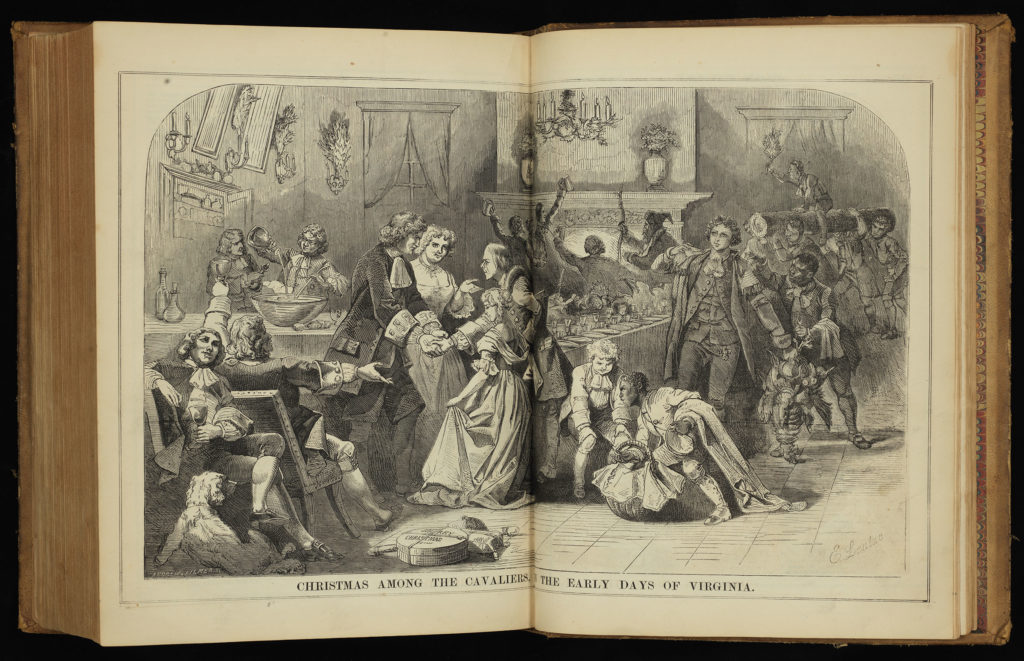
Vanity Fair was a popular title used for three subsequent magazines and should not be confused with the current one published by Condé Nast. The issue featured was from the American satirical magazine published by Louis Henry Stephens and edited by his brothers William Allen Stephens and Henry Louis Stephens. Vanity Fair was published with interruptions caused by problems obtaining paper on which to print between December 31, 1859 and July 4, 1863. Noted for its cartoons and satire columns, this magazine was critical of the Civil War’s progress and Abraham Lincoln’s policies.
Rare Books and Special Collections will be closed for Notre Dame’s Christmas and New Year’s Break (December 24, 2018, through January 1, 2019). We are open our regular hours during Exams, and welcome those looking for a quiet place to study.
Upcoming Events: December and early January
There are no events scheduled to be hosted in Rare Books and Special Collections in December or early January 2019.
Rare Books and Special Collections will be closed for Notre Dame’s Christmas and New Year’s Break (December 24, 2018, through January 1, 2019).
We otherwise remain open for our regular hours during Reading Days and Exams, and welcome those looking for a quiet place to study.
There are just two more weeks to see the exhibit In Solzhenitsyn’s Circle: the Writer and his Associates, which runs through December 14 (the Friday of Notre Dame’s final exams week).
The current spotlight exhibits are Frankenstein 200 (August – December 2018) and Delamarche’s États-Unis de l’Amérique septentrionale: The United States in 1785 (November – December 2018).
Road Trip! Long-distance Driving in 1920
by George Rugg, Curator, Special Collections
Long-distance driving in the early days of the automobile was no joke. This fact is conveyed in indelible fashion by the text of an unattributed diary acquired by the Libraries in 2012, whose entries describe a 1920 auto trip from Long Beach, California to Chagrin Falls, Ohio. Despite an exponential growth in car sales in the 1910s, and the annual publication of a route guide called The Official Automobile Blue Book, trips still proceeded from point to point on local, often unpaved and unidentified roads. Rain and mud limited travel, and snow precluded it.
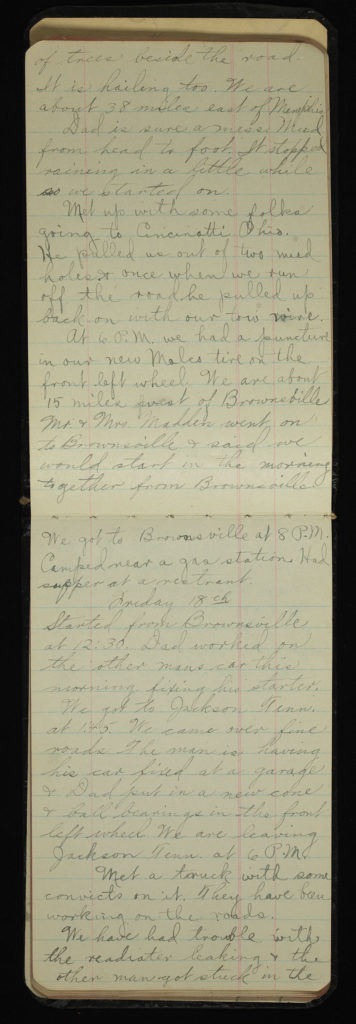 The author of the diary is a young woman of perhaps 20, making the trip with her parents in the family Ford. The journey took almost seven weeks of near constant travel, across the southwestern desert to El Paso and thence to Cleveland by way of New Orleans, Memphis, and Louisville. Ideally, the family spent their nights in campgrounds, but this was not always possible. The journey across the desert was especially difficult:
The author of the diary is a young woman of perhaps 20, making the trip with her parents in the family Ford. The journey took almost seven weeks of near constant travel, across the southwestern desert to El Paso and thence to Cleveland by way of New Orleans, Memphis, and Louisville. Ideally, the family spent their nights in campgrounds, but this was not always possible. The journey across the desert was especially difficult:
Thursday [October] 14th … Got off road to Niland [California]. We went up a sandy mountain & thru revines on low mostly. About 50 miles bad road all up grade. We struck civilization just before dusk. We sure was glad to see some one. We went 100 miles and never saw a dwelling. Sand and more sand. We camped beside a well all alone near a store.
Nor was food always readily available; sometimes “Dad” went hunting for birds and rabbits. Frequent tire punctures and breakdowns came to a head in Hot Springs, New Mexico (“the worst city in the world I believe by a dam site”), where the family was forced to remain for a week. Sometimes they took a break to enjoy local sights, but mostly the schedule called for day after day on the road. Just like travelers on the Oregon Trail, cars welcomed the company of other vehicles, for companionship and safety and for help with the inevitable breakdowns. Expense accounts in the diary indicate that in their first month of travel the family spent around $150.00. Gas seems to have run about 40 cents per gallon. On one occasion the author notes progress of 185 miles in a day, but this was certainly exceptional.
Even the very end of the trip was eventful:
It has rained all day. About 12 miles from Cleveland the darned tire had another puncture. Just got out of the main part of Cleveland & the front left tire went down. Before we got to Lorain the front left tire blew out. Dad said let it go so we drove on it & the left hind tire punctured so we took it off & went on the rim. We got stuck in the mud in Chagrin Falls & walked a couple blocks to Aunt Eustella’s at 10:30 P.M.
In the 20s the government sought to rationalize long-distance auto travel with the introduction of the U.S. Highway System; by late 1926, our travelers might have followed Route 66 from Los Angeles to Chicago. The 50s saw the development of the Interstates. But in 1920, the amenities offered by modern highways were few and far between.
Thanksgiving from the Margins
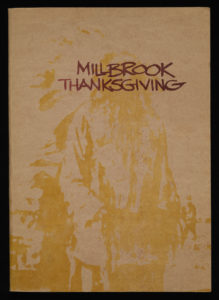 by Rachel Bohlmann, American History Librarian
by Rachel Bohlmann, American History Librarian
This Thanksgiving we’re highlighting a book of poetry and prose that is part of a group of avant-garde American literary works called the Small Press/Mimeograph Revolution, 1940-1970s collection. Millbrook Thanksgiving, by poet and writer Walter Schneider (1934-2015), is a panegyric to the psychedelic-fueled community Timothy Leary created in upstate Millbrook, New York from 1963 to 1967. A psychologist interested in the effects of synthetic drugs on human consciousness, Leary settled in Millbrook after being fired from Harvard University for using the substances he was studying (LSD was legal in the US at that time). In the wake of local police harassment that led to Leary’s repeated arrests for minor drug infractions, he moved to California where he crossed paths with Schneider, a PhD student at Berkeley.
Schneider’s spirited defense of Leary’s counter culturalism places the book’s content in the cultural vanguard of 1971. But so does the book’s production. Printed as a small run of just 3,000 copies, its design—from the soft cover, typography, and heavy paper, to its eclectic illustrations—signals the book’s origins outside of mainstream American publishing. Mad River Press, the small California-based operation that produced Millbrook Thanksgiving, specialized in experimental poetry and creations like Schneider’s. The press released very small runs of poetry chapbooks, which were short (40 pages or less), inexpensively constructed, soft-cover booklets. Some were published anonymously and with no identifying publication information, indicating that publisher and author rejected the authority of copyright law.
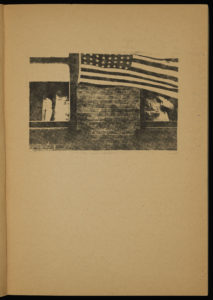 Mad River Press and its authors also placed important visual pieces in their publications. Millbrook Thanksgiving used the first photograph in Robert Frank’s The Americans (published 1958), an extended photo essay that captured Americans in real life. Beat writer Jack Kerouac, who introduced the 1959 edition, noted that “he [Frank] sucked a sad poem right out of America onto film.” His book of photographs remains an important visual text of post-war America. In a chapbook of poetry by Fred Glazer also published in 1971, Mad River Press included an image by the African American painter Louis Delsarte.
Mad River Press and its authors also placed important visual pieces in their publications. Millbrook Thanksgiving used the first photograph in Robert Frank’s The Americans (published 1958), an extended photo essay that captured Americans in real life. Beat writer Jack Kerouac, who introduced the 1959 edition, noted that “he [Frank] sucked a sad poem right out of America onto film.” His book of photographs remains an important visual text of post-war America. In a chapbook of poetry by Fred Glazer also published in 1971, Mad River Press included an image by the African American painter Louis Delsarte.
The library’s Small Press/Mimeograph Revolution, 1940-1970s collection holds more than 350 items. Some, like Millbrook Thanksgiving, were produced by small, experimental presses, while others were created by individuals or small collectives using relatively inexpensive copying technologies like the Ditto machine (remember the smell of those purple ink pages?) or the mimeograph. The collection is searchable in the library’s catalog.
RBSC will be closed during Notre Dame’s Thanksgiving Break (November 22-25, 2018). We wish you and yours a Happy Thanksgiving!
Thanksgiving 2015 RBSC post: Thanksgiving and football
Thanksgiving 2016 RBSC post: Thanksgiving Humor by Mark Twain
Thanksgiving 2017 RBSC post: Playing Indian, Playing White
Sharing our Collections
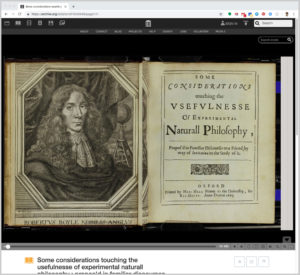
by Aedín Ní Bhróithe Clements, Irish Studies Librarian
Digitizing our books is one way to share our collections with a wider readership. An area where we have begun this digitization is our early print collection in Irish studies. The collection includes books on Ireland and Irish affairs, often from an English perspective, and also books by Irish authors on science, theology and other subjects. The core of the collection was acquired in 2007, and as many of the books are rare and particularly difficult to find in America, we are enthusiastic about sharing the digital images.
In addition to having copies stored in our own CurateND, the digital collection is made available on the Internet Archive and we have plans to share also on Hathi Trust. While Hathi Trust is limited to member libraries, the Internet Archive is freely available to all, and allows readers a number of ways to view the books, including ‘turning pages’ by clicking on a page.
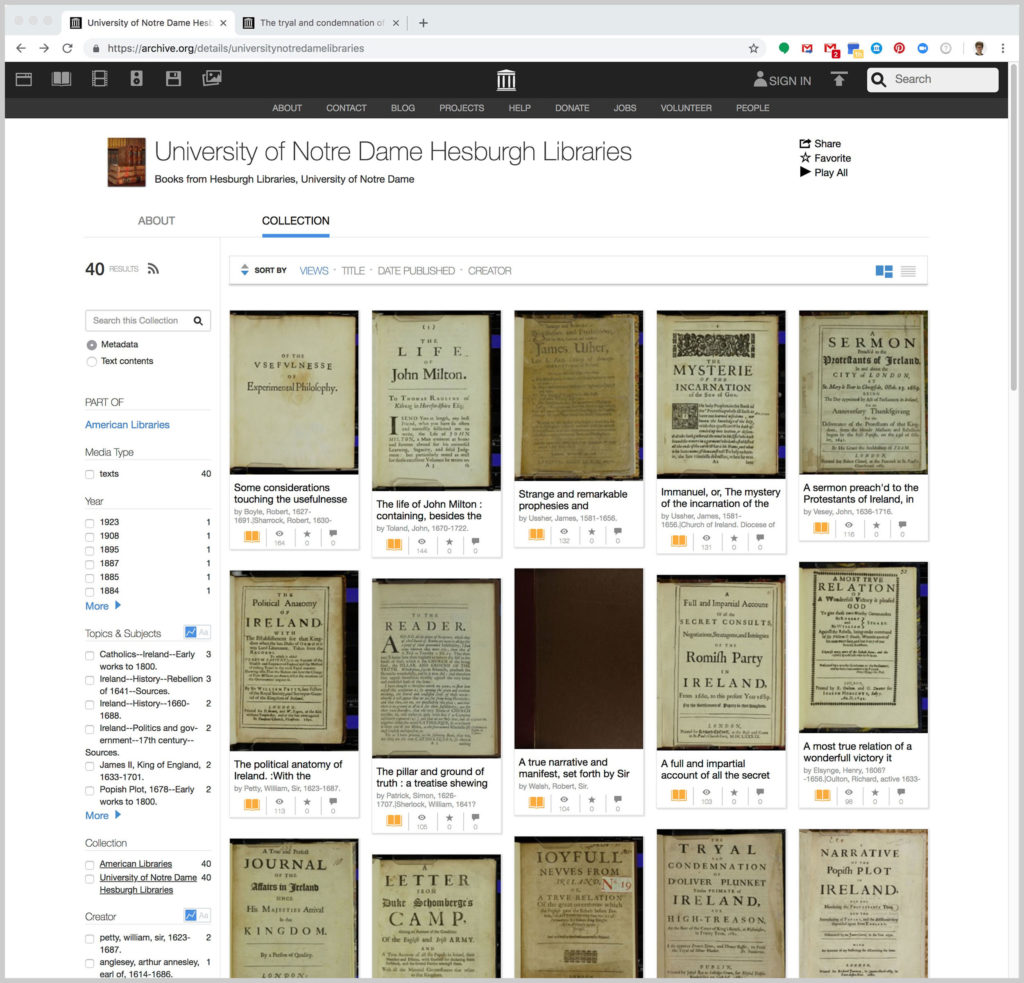
The account of the trial of Saint Oliver Plunket, executed in 1681, is one of the thirty-three books digitized. Use this link to view the book page by page: https://archive.org/details/nd828590865/page/n3
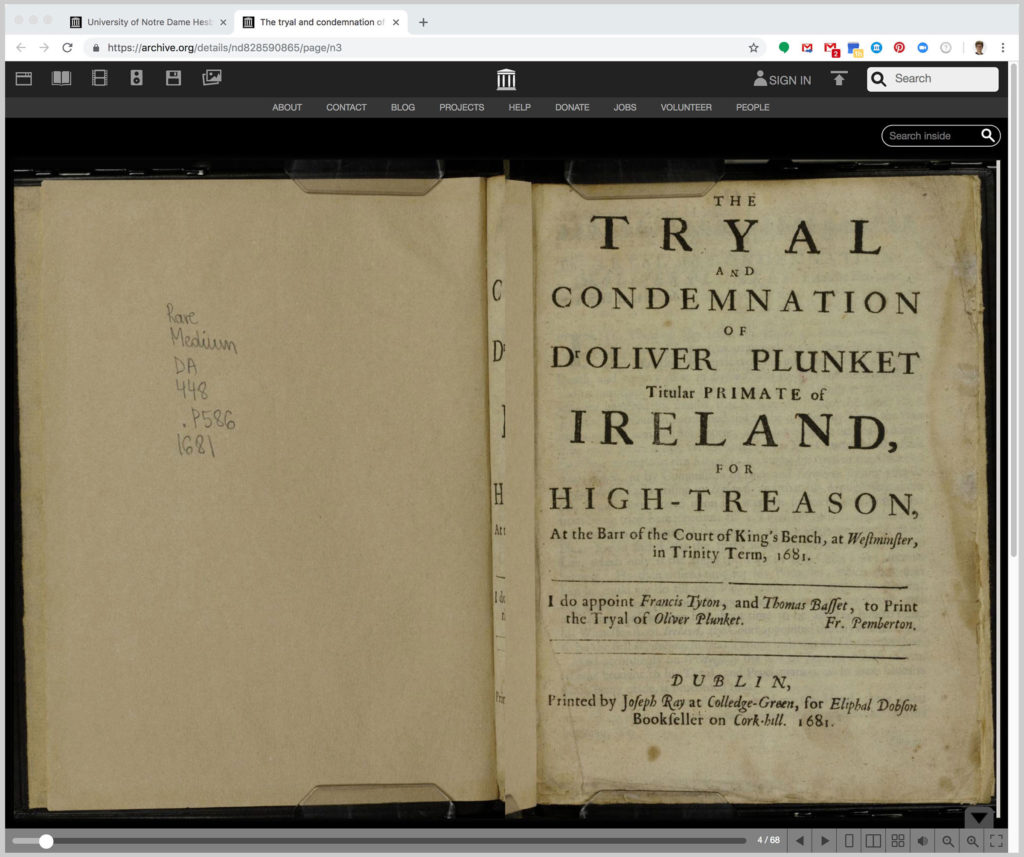
This book is an example of the kind of primary document that makes a great impression on a student who can visit and see the physical book — printed shortly after the trial and execution, the book provides a tangible link to the events of the time.
Upcoming Events: November and early December
Please join us for the following events being hosted in Rare Books and Special Collections:
Tuesday, November 6 at 3:00pm | Workshop: Alternate Careers in Rare Books, Special Collections, Archives, and Museums.
Wednesday, November 7 at 3:30pm | Black Catholic History Month: “The Black Catholic Movement: The First 50 Years, 1968–2018” by Fr. Clarence Williams, CPPS, Ph.D. Co-sponsored by the Cushwa Center for the Study of American Catholicism, Hesburgh Libraries, and the University Archives.
Thursday, November 8 at 5:00pm | The Italian Research Seminar: “Fascist Im/Mobilities: A Decade of Amedeo Nazzari” by Alberto Zambenedetti (Toronto). Sponsored by Italian Studies at Notre Dame.
Friday, November 9 at 3:00pm | Operation Frankenstein: “Melodramatic Frankenstein: Radical Content in a Reactionary Form” by Jeff Cox (University of Colorado Boulder). Co-sponsored by the Department of English and the Indiana Humanities Council.
Tuesday, November 13 at 3:00pm | Workshop: Archival Skills. CANCELED
Thursday, November 15 at 4:30pm | Iberian & Latin American Studies: “Language and Power: Searching for the Origins of Catalan Linguistic Identity” by Vicente Lledó-Guillem (Hofstra University). Co-sponsored by the Department of Romance Languages and Literatures, the Institute for Scholarship in the Liberal Arts, the Medieval Institute, the Nanovic Institute for European Studies, and the Center for the Study of Languages and Cultures.
Thursday, November 29 at 5:00pm | The Italian Research Seminar: “Dante’s Florentine Intellectual Formation: From Quodlibets to the Vita nuova” by Lorenzo Dell’Oso (Ph.D. Candidate, Notre Dame). Sponsored by Italian Studies at Notre Dame.
The exhibit In Solzhenitsyn’s Circle: the Writer and his Associates runs through the end of the semester.
The current spotlight exhibits are Frankenstein 200 (August – December 2018) and Delamarche’s États-Unis de l’Amérique septentrionale: The United States in 1785 (November – December 2018).
RBSC will be closed during Notre Dame’s
Thanksgiving Break (November 22-25, 2018).
A story for Halloween: “Johnson and Emily; or, The Faithful Ghost”
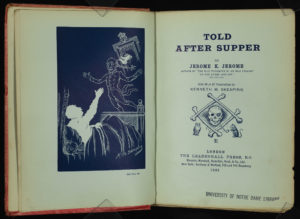 “It is always Christmas Eve, in a ghost story…”
“It is always Christmas Eve, in a ghost story…”
Told after Supper by Jerome K. Jerome is an anthology of short, humorous ghost stories. The copy in Special Collections, shown here, is the first edition, published 1891 by Leadenhall Press in London and illustrated “With 96 or 97 Illustrations” by Kenneth M. Skeaping.
The four primary stories, interspersed with shorter “Interludes,” are told by guests at a Christmas Eve dinner party hosted at the home of the narrator’s uncle. In 19th century England, it was typically not Halloween but Christmas Eve that was considered the time to tell spooky stories.
Jerome’s book follows in the tradition of Charles Dickens’ A Christmas Carol (first published in 1843) and other stories written or published by Dickens in the magazines he edited, Household Words and All the Year Round. Jerome’s stories are less frightening or moralizing, as the earlier Christmas ghosts tended to be, and more amusing.
And so, for this year’s Halloween post, we share for your amusement the first story from this volume, “Johnson and Emily; or, the Faithful Ghost”.
Happy Halloween to you and yours from all of us in Notre Dame’s Special Collections!
Halloween 2016 RBSC post: Ghosts in the Stacks
Halloween 2017 RBSC post: A spooky story for Halloween: The Goblin Spider
Recent Acquisition: Dandini’s Missione apostolica
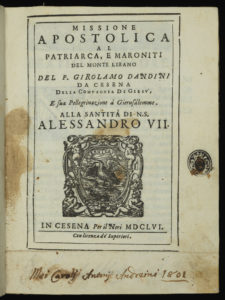 by Alan Krieger, Theology and Philosophy Librarian
by Alan Krieger, Theology and Philosophy Librarian
Hesburgh Libraries has just acquired an important and rare first edition of Girolamo Dandini’s Missione apostolica al patriarca, e Maroniti del Monte Libano (Cesena, 1656). In 1596, Dandini (1554-1634), a Jesuit, was sent as Apostolic Nuncio by Pope Clement VIII to discuss doctrinal issues with the Maronite Christians of Lebanon, whose traditions differed from those of the Latin church.
Dandini’s travel account also includes observations of numerous places and peoples, including Cyprus, Crete, and the Ottomans. His account is significant for its record of Muslim-Christian relations at the time. The work became very popular and was translated from Italian into several other languages.
Hesburgh Libraries hold microform and electronic editions of the English version, A voyage to Mount Libanus. Only two other North American libraries hold physical copies of this edition.
National Hispanic Heritage Month 2018
We join the Library of Congress and the National Endowment for the Humanities, National Gallery of Art, National Park Service, Smithsonian Institution, United States Holocaust Memorial Museum and U.S. National Archives and Records Administration in celebrating National Hispanic Heritage Month.
Also in recognition of the anniversary of Hurricane María and Puerto Rico’s ongoing recovery struggle, this post highlights the island’s artistic heritage.
Puerto Rican Artists
by Erika Hosselkus, Curator, Latin American Collections
Puerto Rican artists Félix Rodríguez Báez, José A. Torres Martinó, Lorenzo Homar, and Rafael Tufiño (members of the Generation of ’50) formally established the Centro de Arte Puertorriqueño in 1950. This studio, art school, and gallery was influenced by the Taller de Gráfica Popular in Mexico and its mission of educating the public through art. At the same time, the member artists of the CAP used their work to express and assert a uniquely Puerto Rican identity.
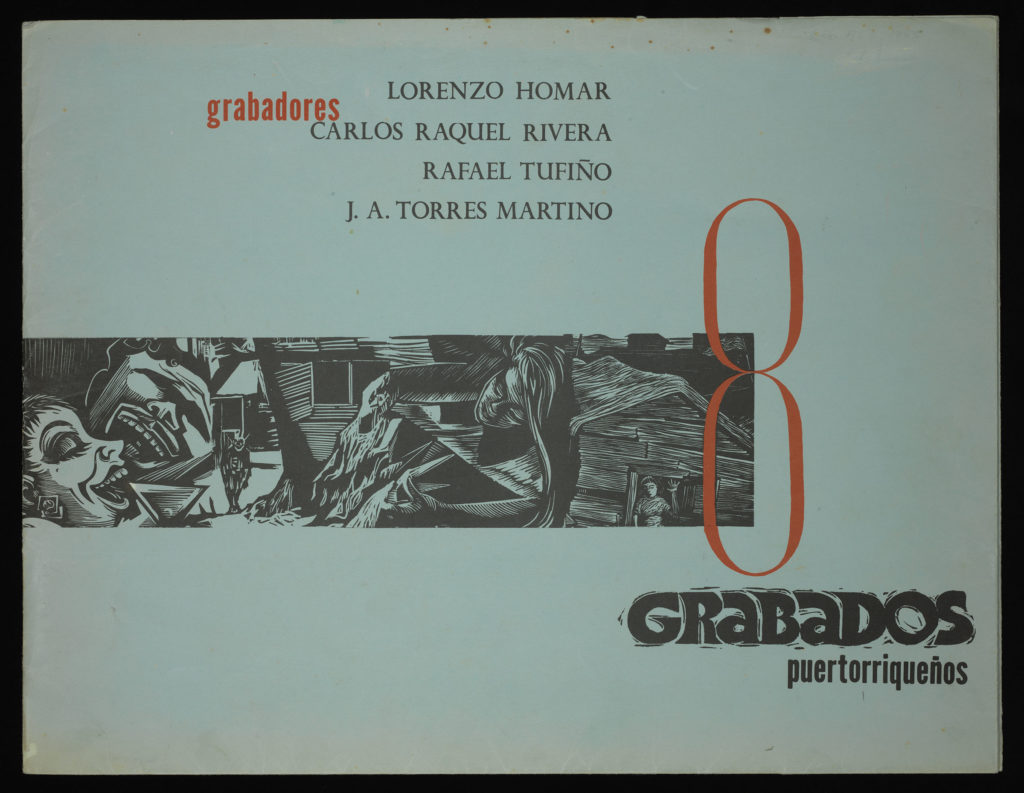
This portfolio of 8 prints, published in the late 1960s by the Centro de Artes Gráficas Nacionales, includes two works by each of four key members of the Generation of ’50, Lorenzo Homar, Carlos Raquel Rivera, Rafael Tufiño, and J.A. Torres Martino. The pieces are reproduced from original prints and were chosen to portray the development in aesthetic of each artist since 1951, when the CAP issued its first portfolio.
Carlos Raquel Rivera’s first print, “Marea Alta,” owes much to the influence of the Taller de Gráfica Popular in both the social commentary made through its content and in its style. His second print, “El Pegao,” reflects what had become Rivera’s signature style, driven by a strong black/white contrast.
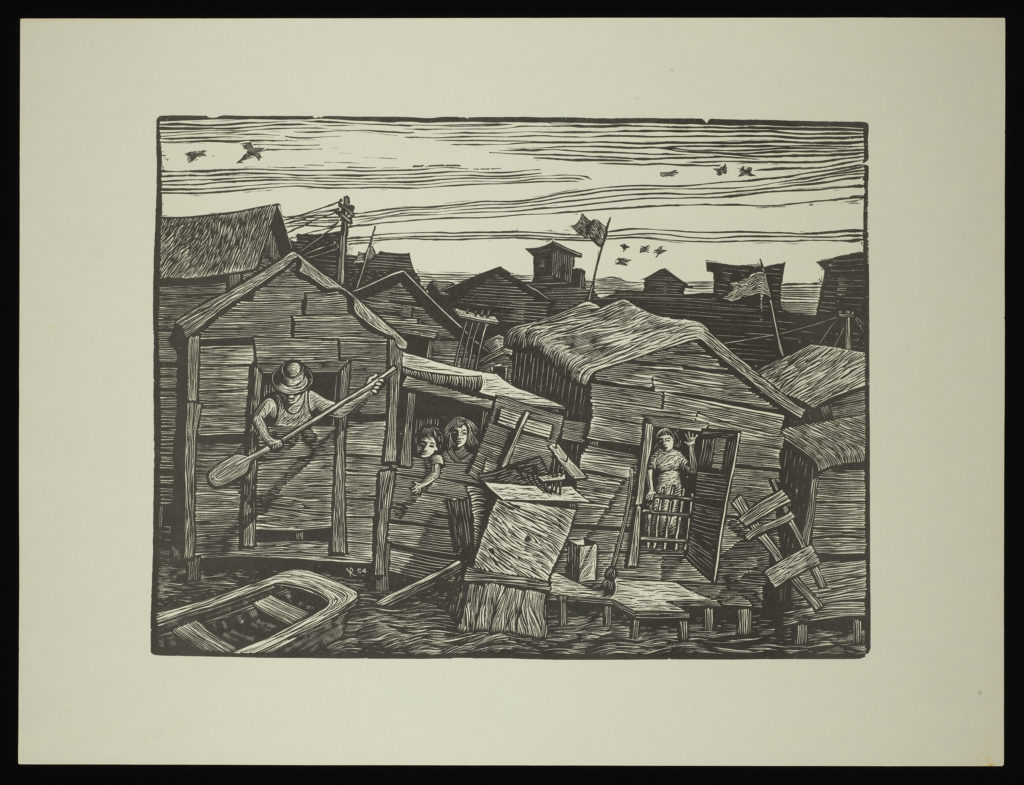
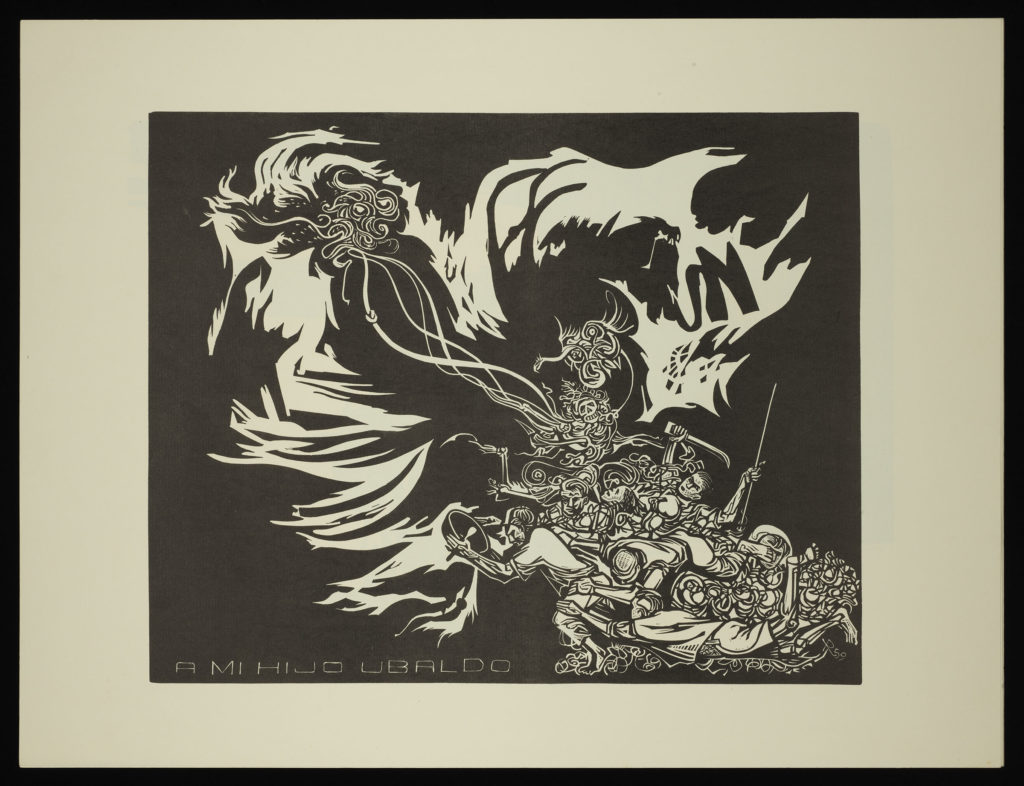
The contrast between the two prints submitted by Lorenzo Homar is striking also. “La Tormenta” a depiction of a man peering over his shoulder at an oncoming storm is poetic and suggestive while “La Vitrina,” a critical depiction of tourism in Puerto Rico is bold and aggressive in style.
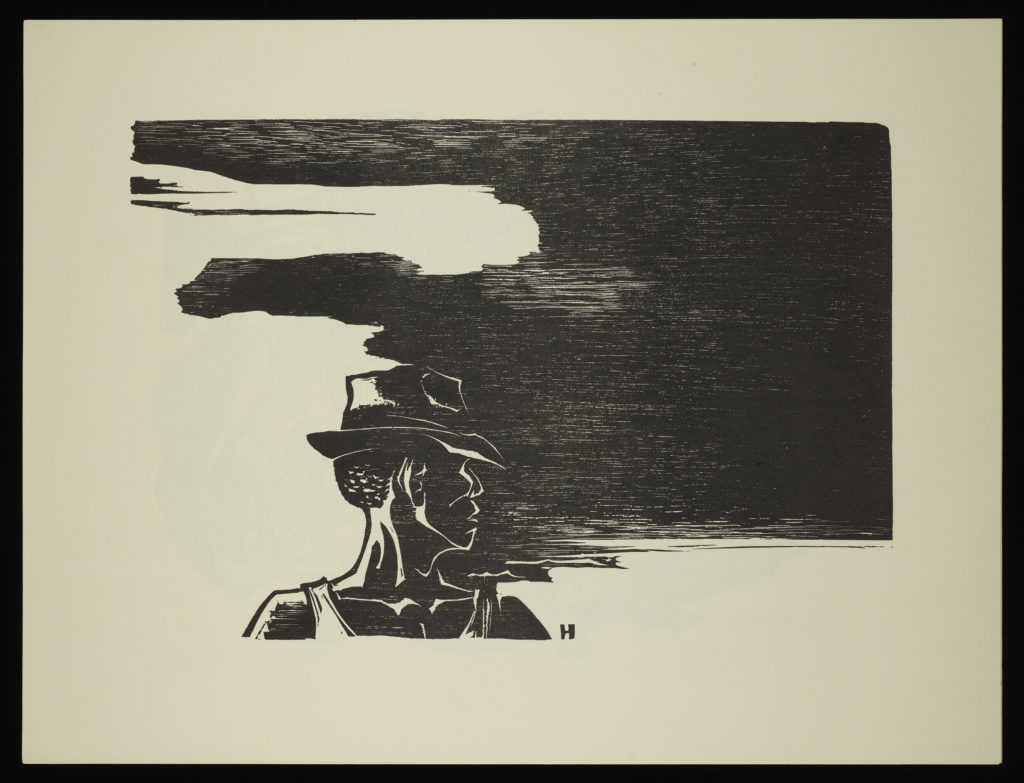
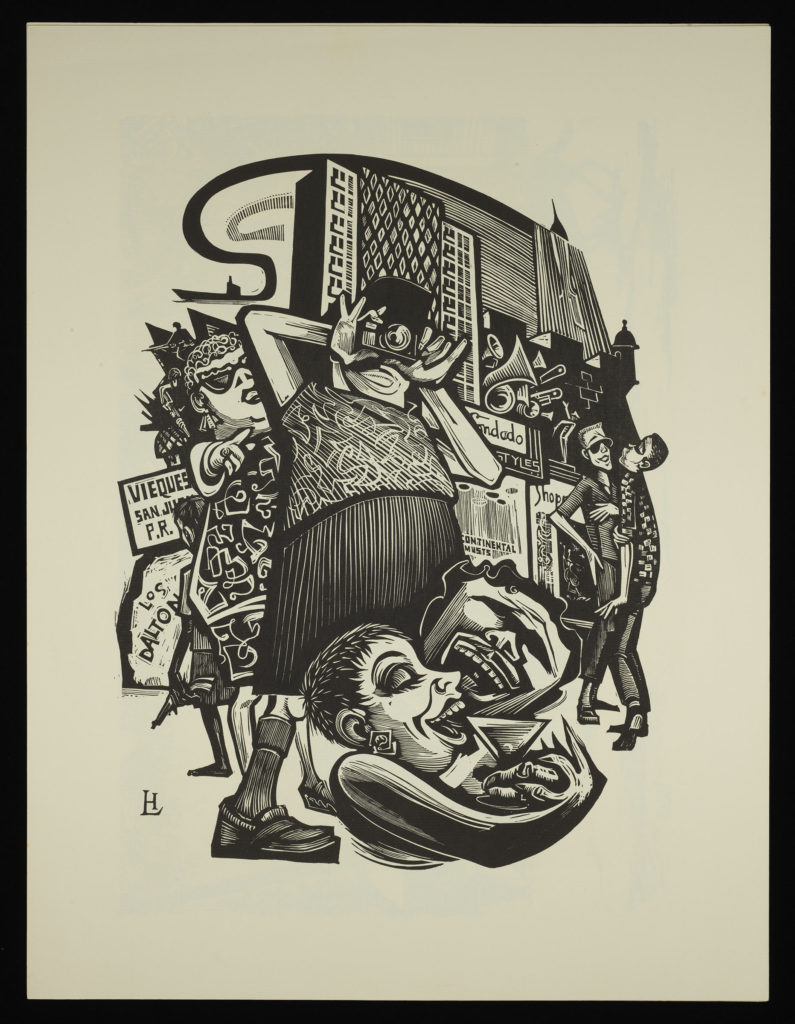
As a whole, this collection attests to the strength and evolution of print-making as an activist art form in mid-century Puerto Rico.
